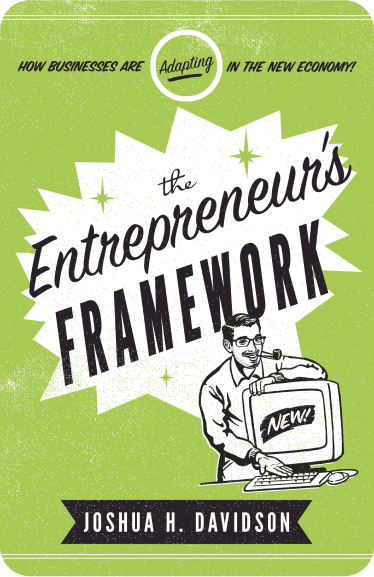You may have heard people throwing around words like “citizen developer” and “citizen development” lately. If you have wondered what they are talking about, than this is the post for you!
In this post, we are going to explore these terms and how businesses are actually already applying these ideas.
Let’s take a look!
What Is Citizen Development?
Citizen development is a business process. Through this protocol, non-IT-trained employees are encouraged to become software developers.
In order to do this, they use IT-approved low-code and no-code apps.
To keep things short and sweet for the purposes of this post, here is a little bit about how these types of apps work.
Low-code platforms use graphic visual tools to allow users to drag and drop portions of reusable code, rather than having to enter it manually over and over again. No-code development takes this even farther. With these types of platforms, someone who cannot read code at all uses simple graphics to create apps.
Essentially, with simple visual tools, people with no formal training in coding or application development can drag and drop pieces of code to perform an array of tasks.
This includes applying actions and connecting components across business components.
What Problems Are Businesses Trying To Solve With The Citizen Developer Model?
There are numerous pros and cons to businesses taking on a low-code and citizen developer approach. In this post, we will take a look at many of them.
It’s important to remember that this has not happened for no reason. Here are some of the biggest factors that have inspired businesses to pursue a citizen developer model.
There is a high demand for app development and a shortage of skilled developers.
This statistic published by Diginomica really puts things into perspective:
There will be more applications created in the next four years than have been created in the past forty. 500 million applications will need to be created to keep innovation ticking on.
So, as you can see, the need is incredibly high. However, when it comes to finding people with the skills to create and maintain all of those applications, there simply are not enough.
According to Communications of the ACM:
It is evident a labor shortage is expected to arrive soon and that it will disproportionately affect highly skilled workers. With an estimated reduction of 11,700 CIS graduates in 2015 and the BLS estimated 22% growth in software developer jobs, there could be thousands of positions left unfilled or hard-to-fill.
Why is There a Skilled Developer Shortage In The US?
The US has trained large numbers of foreign students in this area over the years, who then join the workforce. Due to several factors, foreign students are no longer coming to the US.
In fact, over the pandemic, their enrollment dropped by 20%, causing US universities to lose $10 Billion in revenue. However, data shows that before the pandemic, foreign students were starting to turn away from the US.
Why is this? According to a college counselor in Brazil, many students are choosing countries where education is more affordable, the general culture is less hostile to foreigners, and where gun violence is not a concern.
To put the full extent of this loss in context:
One in five entrepreneurs who founded start-ups in the United States is an immigrant — and three-quarters of them first came to America as students.
Why The “Citizen Developer Model May Not Be A Quick Cure All

While many IT and app development professionals have a lot of concerns about businesses relying too much on and low and no-code apps, businesses have already chosen them.
According to a report by Forrester, low-code platforms accounted for about 75% of all app development done in 2021. In 2020, this number was only 40%.
Here are only 3 of the biggest problems that they pose. There are many reasons why tech professionals have concerns about security, overall cost in the long run, and more.
1. Vendor Lock-In
Essentially, when a business outsources all of its internal code to an outside platform, they make themselves vulnerable to their fees, demands, and processes.
These platforms only make money if users stay with them, so they may make it nearly impossible to leave. They also can raise rates and change the rules as they like. What seems like a good deal at first may become expensive once they feel you are locked in.
If your business grows or changes and needs something that the platform doesn’t offer, you may be out of luck, unless you want to start from scratch.
2. Businesses No Longer Have Access To The Code Their Business Runs On
With traditional app development, developers are only limited by the coding language. They can create and change it as a business needs.
With no and low-code applications, developers no longer have direct access to the code a business runs on.
If there is an issue or a change of circumstances developers may not be able to do anything to address them.
3. Security Issues
While no and low-code platforms do include security protocols, it makes sense that a system tailored to your business, that can grow and change with it freely, will simply be more effective.
Again, if the platform you use has security issues, there is nothing you can do about it. Their issues may harm your customers and reflect poorly on your reputation when you did nothing wrong.
Quality vs Quantity
The Citizen Developer model is fairly new, so there is still a lot to be seen in how it plays out. Ultimately, it comes down to a question of quality and quantity.
Can citizen development produce more applications faster? Absolutely. And businesses are in dire need of this.
However, will many of these applications be of questionable quality if they are not overseen by professionals? It is possible.
After all, apps need to have functionality and efficiently complete tasks. Just having a lot of them if they don’t actually work well is not a real solution.
The Pros and Cons of Relinquishing Control
There are a lot of questions when it comes to the functional future involved in outsourcing all, or large portions, of the code your business runs on to an outside platform.
What if that platform shuts down, randomly hikes prices, or simply cannot offer the functionality that your business needs down the line?
However, no and low-code development platforms can relieve some of the immediate pressure on IT departments. They can also empower employees to interact with code and even teach each other to do it.
The citizen developer movement provides opportunities and solves a set of problems, but may also create some new issues.
We will simply have to wait and see.
Is It As Easy As They Say?

Many no-code and low-code platforms, and advocates for citizen development, say that the only barrier to development is learning to code.
Some even say that they can empower anyone from any department or background to have the ability to think like a developer.
One of the main draws of these types of platforms is that they say people need minimal or no training whatsoever to use them.
Some claim that people with no development knowledge can do work as well as professional developers, saving your business hundreds of thousands of dollars.
However, this might be somewhat optimistic. Using tech of any kind is learned skill that does not come naturally to many people.
While some claim that almost anyone can think and perform like a developer with the right no-code tools, many people in the workforce today still don’t know how to rotate PDFs or perform basic Excel functions.
Final Thoughts on the Citizen Developer
It is certainly an interesting time when it comes to the intersection of business and tech!
The citizen developer movement is one of the ways that enterprises are seeking to problem solve in a rapidly evolving environment.
What do you think? Comment below.
Since 2009, we have helped create 350+ next-generation apps for startups, Fortune 500s, growing businesses, and non-profits from around the globe. Think Partner, Not Agency.
Find us on social at #MakeItApp’n®

















